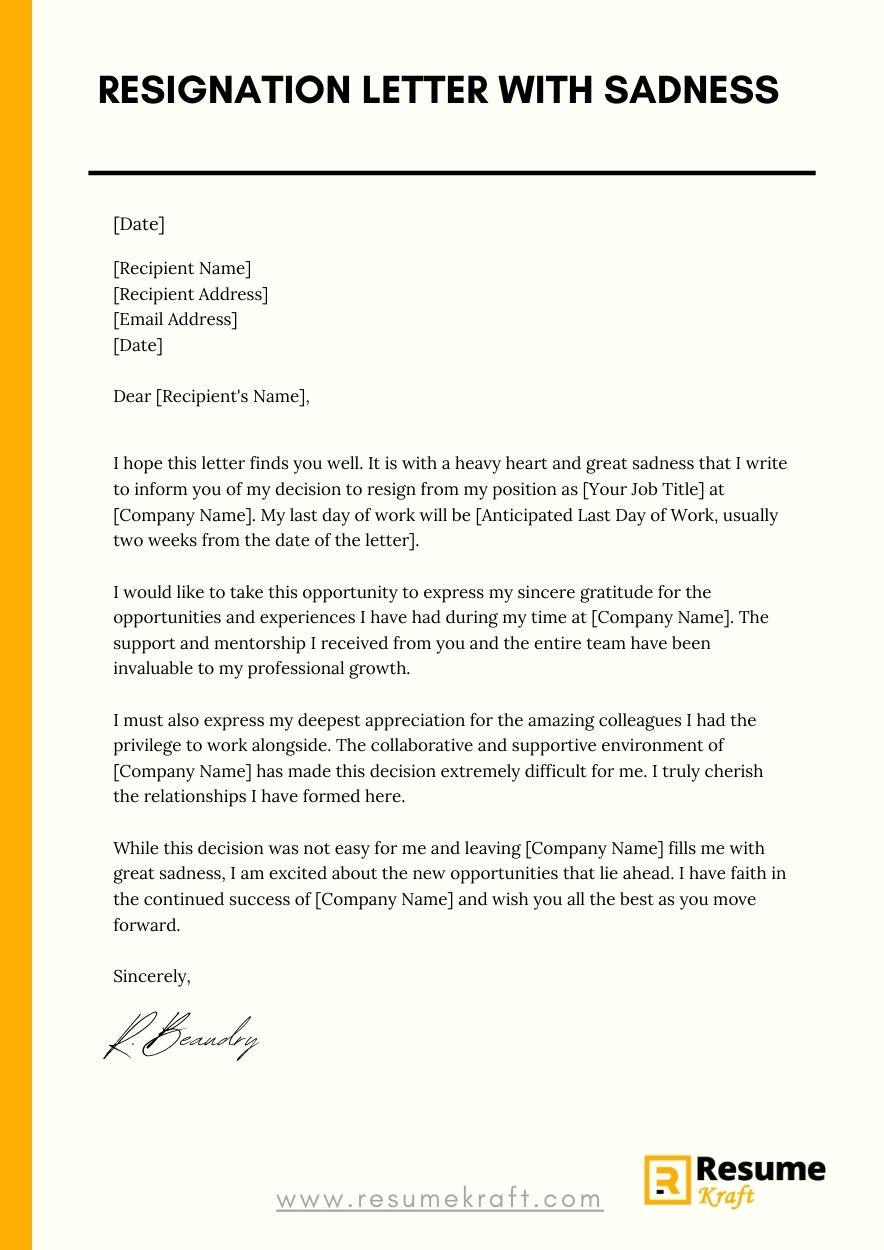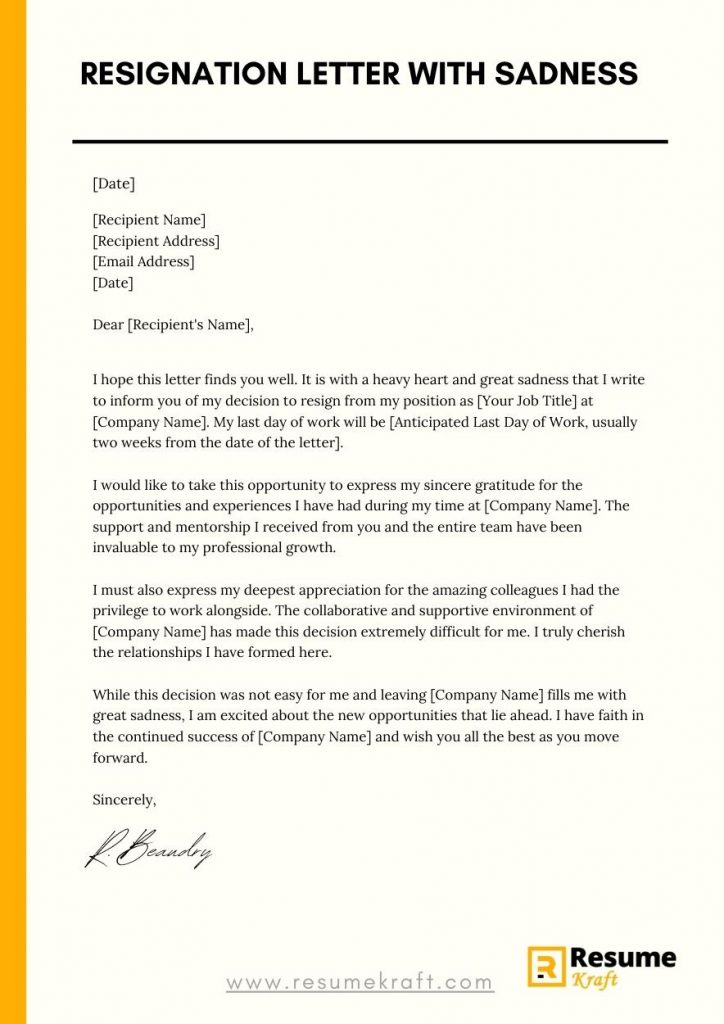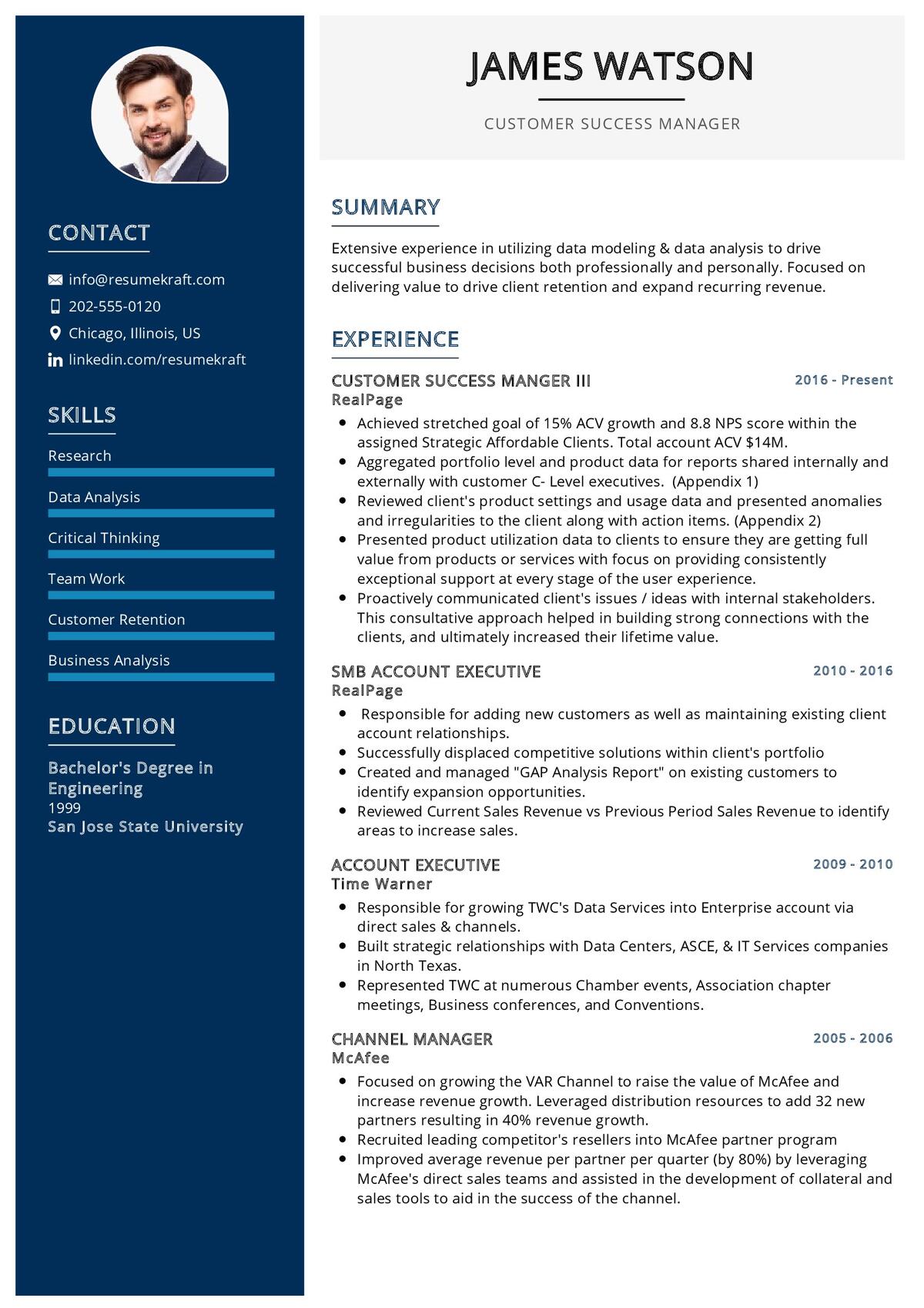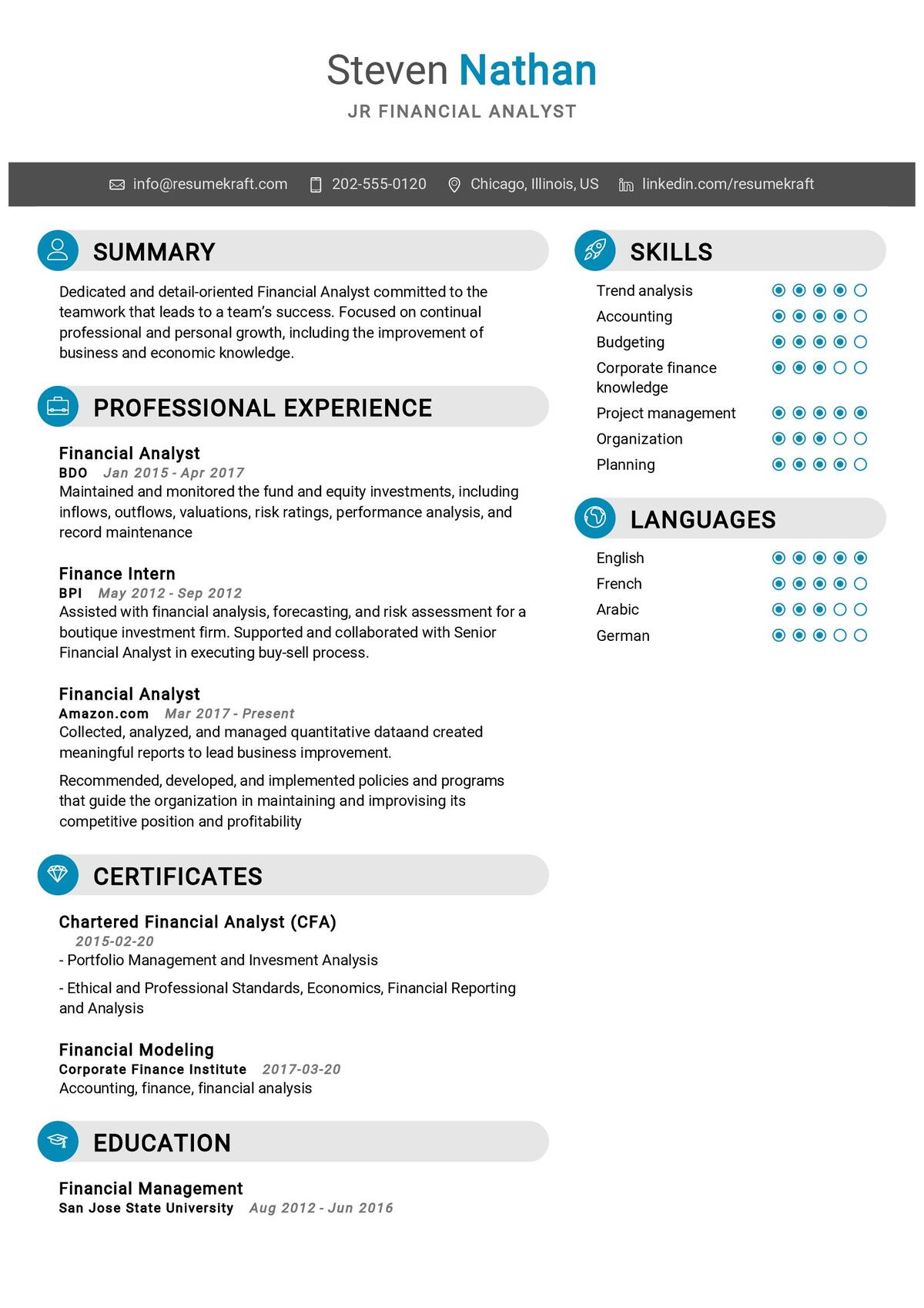
Resigning from a job can be a difficult and emotional decision. Whether you’ve found a new opportunity or simply need a change, it’s important to leave your current position on good terms. Sometimes, resigning with sadness is inevitable, especially if you’ve developed strong relationships with your colleagues and have enjoyed your time at the company. In this comprehensive guide, we will walk you through the process of writing a resignation letter with sadness, providing tips, samples, and guidance to help ensure your letter is both heartfelt and professional.
When it comes to writing a resignation letter with sadness, there are certain elements you should include to convey your emotions effectively. By including specific details and expressing gratitude for your time with the company, you can leave a lasting positive impression. Additionally, there are certain things you should avoid mentioning in your resignation letter to maintain professionalism. Lastly, formatting your letter correctly is crucial, whether you choose to print it or send it via email. We will cover all these aspects in detail to ensure your resignation letter reflects your true emotions while still maintaining a professional tone.
In this article, we will showcase both printed resignation letter samples and email resignation letter examples to suit different formats and preferences. By following this guide and utilizing the provided samples, you can confidently write a resignation letter that reflects your genuine emotions with professionalism.
What To Include in a Resignation Letter with Sadness
When writing a resignation letter with sadness, it’s important to include certain key elements to convey your genuine emotions effectively. By including these components, you can leave a positive final impression and maintain strong relationships with your colleagues. Here are the essential elements to include in your resignation letter:
- Header and Date: Ensure the letter includes your name, job title, and current date at the top.
- Recipient’s Information: Address the letter to your immediate supervisor or the appropriate person in your company’s HR department.
- Resignation Statement: Clearly state your intention to resign from your position along with your anticipated last day of work.
- Gratitude: Express sincere gratitude for the opportunities and experiences you have had with the company. Highlight specific achievements or positive aspects you enjoyed.
- Recognition: Acknowledge and appreciate the contributions of your colleagues, supervisors, and team members. Mention specific individuals and their impact on your professional growth.
- Transition Assistance: Offer assistance in transitioning your responsibilities to ensure a smooth handover. This gesture shows your commitment to the team and helps maintain good relationships.
- Contact Information: Provide updated contact information so your colleagues can stay in touch with you.
- Farewell Message: End the letter with a heartfelt farewell message, expressing your sadness at leaving and your best wishes for the future success of the company.
Remember, the key to writing a resignation letter with sadness is to strike a balance between conveying your genuine emotions and maintaining professionalism.
What Not to Include in Your Resignation Letter with Sadness
When writing a resignation letter with sadness, it’s equally important to know what not to include. While it’s natural to feel emotions when resigning, it’s essential to maintain a professional tone in your letter. Here are a few things to avoid:
- Negative Comments: Refrain from voicing any negative opinions or grievances in your resignation letter. Maintain a positive tone throughout.
- Personal Attacks: Avoid making personal attacks or assigning blame for your decision to resign.
- Criticizing the Company: Steer clear of criticizing the company, its policies, or its employees. Focus on the positive aspects of your experience instead.
- Excessive Emotion: While it’s important to express your sadness, avoid excessive emotional outbursts that may come across as unprofessional.
- Confidential Information: Do not disclose any confidential information about the company or its employees in your resignation letter.
By avoiding these common pitfalls, your resignation letter will maintain professionalism and leave a positive impression.
How To Format a Resignation Letter with Sadness
Formatting your resignation letter correctly is crucial to ensure it looks professional and visually appealing. Depending on your preference, you can either print your letter or send it via email. We will discuss the formatting guidelines for both options.

Printed Resignation Letter Sample
[Your Name]
[Your Job Title]
[Current Date]
[Recipient’s Name]
[Recipient’s Job Title]
[Company Name]
[Company Address]
Dear [Recipient’s Name],
I hope this letter finds you well. It is with a heavy heart and great sadness that I write to inform you of my decision to resign from my position as [Your Job Title] at [Company Name]. My last day of work will be [Anticipated Last Day of Work, usually two weeks from the date of the letter].
I would like to take this opportunity to express my sincere gratitude for the opportunities and experiences I have had during my time at [Company Name]. The support and mentorship I received from you and the entire team have been invaluable to my professional growth.
I must also express my deepest appreciation for the amazing colleagues I had the privilege to work alongside. The collaborative and supportive environment of [Company Name] has made this decision extremely difficult for me. I truly cherish the relationships I have formed here.
To each and every teammate, I want to extend my heartfelt thanks for your guidance, encouragement, and camaraderie. Your contributions have made a lasting impact on me, both personally and professionally.
I would like to offer my assistance during this transition period to ensure a seamless handover of my responsibilities. Please let me know how I can best support the team. You can reach me at [Your Phone Number] or [Your Email Address].
While this decision was not easy for me and leaving [Company Name] fills me with great sadness, I am excited about the new opportunities that lie ahead. I have faith in the continued success of [Company Name] and wish you all the best as you move forward.
Once again, thank you for everything. It has been an honor to be part of the [Company Name] family.
With deepest regards and warmest wishes,
[Your Name]
Email Resignation Letter Example
Subject: Resignation Letter – [Your Name]
Dear [Recipient’s Name],
I hope this email finds you well. It is with mixed emotions that I write to inform you of my decision to resign from my position as [Your Job Title] at [Company Name]. After much consideration, I believe it is time for me to seek new challenges and opportunities. My last day of work will be [Anticipated Last Day of Work, usually two weeks from the date of the email].
I want to express my sincere gratitude for the opportunities and experiences I have had during my time at [Company Name]. The support and guidance I have received from you and the entire team have been instrumental in my professional growth. I am truly grateful for the trust you placed in me and the chances I had to contribute to the success of the company.
I also want to take this opportunity to acknowledge the incredible colleagues I’ve had the pleasure of working with. The camaraderie and collaboration at [Company Name] made it a truly special place to work. I will miss the daily interactions and the shared goals we pursued together.
During this transition period, I am committed to ensuring a smooth handover of my responsibilities. Please let me know how I can best assist the team in this process. You can reach me at [Your Phone Number] or [Your Email Address].
Although I am filled with sadness to leave such a remarkable company, I am excited about the new opportunities that lie ahead. I have no doubt that [Company Name] will continue to thrive under your leadership.
Thank you once again for everything. It has been an absolute privilege to be part of [Company Name]. I will always cherish the memories and relationships I have formed here.
With deepest regards and warm wishes,
[Your Name]
Key Takeaways
- When resigning with sadness, include specific details and express gratitude for your experiences at the company.
- Avoid negative comments, personal attacks, and criticizing the company in your resignation letter with sadness.
- Format your resignation letter correctly, whether it’s printed or sent via email, to maintain a professional appearance.
- Make sure to offer assistance during the transition period to show your commitment and maintain relationships.
- Use the provided resignation letter samples for reference to write your heartfelt, yet professional resignation letter.
Planning to Write a Resume?
Check our job winning resume samples


Frequently Asked Questions:
Q: How should I address my resignation letter with sadness?
A: Begin your resignation letter with a professional greeting, addressing the recipient by their name and title.
Q: Should I mention the reasons for my sadness in the resignation letter?
A: While it’s natural to feel sadness when leaving a job, it’s best to focus on expressing gratitude and appreciation in your resignation letter rather than dwelling on the reasons for your sadness.
Q: Is it necessary to include my contact information in the resignation letter?
A: Yes, it is important to provide updated contact information so your colleagues can stay in touch with you after you leave the company.
Q: Can I include a personal anecdote in my resignation letter with sadness?
A: Yes, sharing a brief personal anecdote about a positive experience or relationship you had at the company can be a nice touch, as long as it remains professional and relevant.
Q: How long should my resignation letter with sadness be?
A: It’s best to keep your resignation letter concise and to the point. Aim for one to two pages maximum, expressing your emotions while maintaining professionalism.
Conclusion:
Resigning from a job with sadness is a sensitive and emotional process. By following the comprehensive guide and utilizing the provided resignation letter samples, you can write a resignation letter that effectively conveys your emotions while maintaining professionalism. Remember to include elements such as gratitude, recognition, and transition assistance in your letter. Avoid negative comments or personal attacks, and focus on expressing appreciation for your experiences at the company. Formatting your letter correctly is also essential, whether you choose to print it or send it via email. By following these guidelines, you can write a resignation letter with sadness that leaves a positive final impression and preserves the relationships you’ve built.

